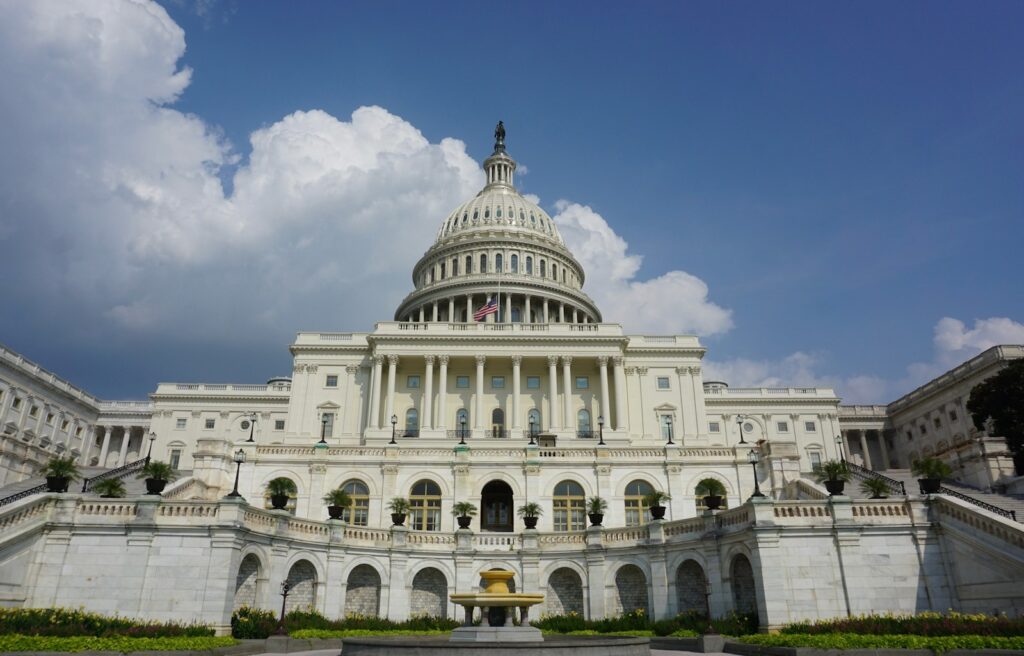
The Federal Acquisition Regulation, or FAR, serves as the cornerstone of government procurement in the United States. It stands as the primary set of rules guiding how executive branch agencies acquire products and services, acting as the foundational document for the vast landscape of federal contracts. Its overarching purpose, as stated in its introduction, is “to deliver on a timely basis the best value product or service to the customer, while maintaining the public’s trust and fulfilling public policy objectives.”
Beyond outlining procedures, the FAR is an integral part of the broader Federal Acquisition System. This system is designed to optimize value for agencies, streamline administrative processes, and foster fair competition among suppliers. It encapsulates a commitment to efficiency, transparency, and fiscal responsibility in government spending.

The Evolution of Federal Procurement Rules
The roots of regulated government procurement in the U.S. stretch back to the nation’s earliest days. During the Revolutionary War, General George Washington expressed concerns over profiteering, leading to the establishment of a government-owned cannon factory in 1777. This early recognition of the need for regulated spending laid groundwork for future legislation.
Congress enacted the first law specifically regulating federal procurement in 1792. Since then, it has passed more than 4,000 acquisition-related statutes. Early attempts at centralization, such as Alexander Hamilton’s 1798 move to consolidate purchasing within the Treasury Department, proved challenging even for the small government of the era, requiring delegation the following year. The call for competition among contractors emerged from Congress in 1809, and Supreme Court decisions starting in 1831 solidified Congress’s exclusive authority over Treasury funds, limiting executive contracting powers.
Post-World War II brought new complexity to government procurement. The nation needed specialized equipment and services, and lessons from wartime spending spurred reforms. Legislation like the Selective Service Act of 1948, the Renegotiation Act of 1948, and the Defense Production Act of 1950 emerged from this need. The Armed Services Procurement Act of 1947 standardized purchasing across the Army, Navy, and Air Force, leading to the Armed Services Procurement Regulation (ASPR). President Truman emphasized in a letter to the ASPR committee the need for “establish[ing] standards and definitions to guide all personnel who have authority to place contracts,” warning that without such guidance, “differences in interpretation and policies may result in imprudent contracts.”
The Hoover Commission of 1947 recommended centralizing efforts to enhance the federal supply system. In response, the Federal Property and Administrative Services Act of 1949 established the General Services Administration (GSA), transferring procurement responsibilities from the Treasury Department to this new agency. A 1956 task force with representatives from GSA, the Department of Defense (DoD), and the Small Business Administration reviewed practices and recommended a new regulation, leading to the 1959 announcement of the Federal Procurement Regulations (FPR) for 45 independent civilian agencies.

The Birth of the FAR
The FPR’s high-level guidance resulted in significant variations in procurement policies, differing between and within agencies. This fragmented approach burdened contractors navigating government sales requirements. The need for unification led to the creation of the Office of Federal Procurement Policy (OFPP) in 1974. A 1979 OFPP study revealed 19 agencies had “877 different sets of procurement regulations…comprising 64,600 pages of regulations,” with 83 percent issued below agency headquarters, highlighting widespread inconsistency.
Recognizing the need for standardization, the OFPP established the Federal Acquisition Regulation system in 1980. The first comprehensive version took effect in 1984, the same year the Competition in Contracting Act was released to enhance government spending value through increased contractor competition. Much of today’s FAR originates from this act.

Structure and Organization of the FAR
The Federal Acquisition Regulation is codified in Chapter 1 of Title 48 of the Code of Federal Regulations (CFR). It is organized into Subchapters A through H, encompassing Parts 1 through 53. For convenience, Chapter 1 is typically printed in two volumes by the Government Printing Office, though these are not formal subdivisions.
Top-level sections are “FAR Parts,” with subdivisions called “FAR Subparts.” Citations reference part, subpart, section, and subsection—for example, “FAR 31.205-22” for legislative lobbying costs rules. Parts 1 through 4 outline general information, including the system’s purpose, administrative framework, contracting officers’ authorities, and key term definitions. Compliance with the FAR, alongside initiative in areas not explicitly addressed or prohibited by law, is required of all Acquisition Team members, who include technical, supply, and procurement communities, their customers, and contractors. The system aims to foster “teamwork, unity of purpose and open communication” among these stakeholders.

Key Provisions and Focus Areas
Part 3 addresses improper business practices and personal conflicts of interest. Subpart 3.6 generally prohibits knowingly awarding contracts to government employees or organizations substantially owned by them, a principle reinforced by GAO decisions that an agency does not violate this if neither the Contracting Officer nor selection officer had prior knowledge of such ownership. FAR 1.602-3, added in 1988, defines ratification as approving an unauthorized commitment by an official with requisite authority. For ratification, the government must have received goods or services; the ratifying official must have had authority to obligate the U.S. at the time; the contract must be proper (adequate funds, not prohibited by law, aligned with agency procedures); the contracting officer must find the price fair and reasonable and recommend payment with legal counsel concurrence; and specific dollar limits apply, from $10,000 for a Chief of Contracting Office to higher amounts for a Head of Contracting Authority.
Parts 5 through 12 cover acquisition planning, including competition requirements, source identification, contractor qualifications, systematic planning, and market research (per FAR Part 10). They guide agencies in describing needs. FAR Part 8.4 covers federal supply schedules, including blanket purchase agreements and GSA’s Multiple Award Schedule contracts. Part 10 mandates agencies use commercial market research to “identify the capabilities of small businesses and new entrants into Federal contracting.” Acquisition of commercial products and services, including Non-Developmental Items (NDI) and commercial off-the-shelf (COTS) items, is governed by FAR Part 12, with simplified procedures permitted for smaller values.
Parts 13 through 18 define purchasing procedures, including soliciting offers, evaluating proposals, and contract types. FAR Part 14 details sealed bids, where requirements are stated “clearly, accurately, and completely,” and price solely determines the award. It prohibits “unnecessarily restrictive” specifications that limit bidders. Subpart 15.6 addresses unsolicited proposals, encouraging agencies to accept them and allow prior contact with submitters. Part 16 identifies available contract types and selection rules. Part 17 covers specialized methods like multi-year contracting and reverse auctions; Part 18 outlines emergency contracting flexibility. Parts 19 through 26 discuss socioeconomic programs, labor laws, environmental and safety considerations, and privacy protections, reflecting public policy integration.

Specialized Contracting and Modern Updates
Parts 27 through 33 address general contracting requirements, including patents, insurance, taxes, financing, and dispute resolution. Intellectual property is governed by FAR Part 27 and agency supplements like DFARS 227, covering “technical data,” computer software, and documentation. Parts 34 through 41 cover special contracting categories: research, architect-engineer contracts, information technology, and utilities. A September 10, 2021, update shifted accessibility rules, requiring agencies to build accessibility into procured products and services instead of merely accommodating disabilities.
Federal agencies must now identify applicable Information and Communication Technology (ICT) accessibility standards for each procurement, document exceptions in acquisition plans, identify users’ disability needs, and determine how ICT functionality will be available to these users, specifying development, installation, configuration, and maintenance. These rules implement U.S. Access Board revisions, strengthening Section 508 mandates for comparable access regardless of disability.
Service contracts, detailed in FAR 37.102 and Part 37.6, must be performance-based with measurable outcomes when practicable. FAR 37.601 requires Performance Work Statements (PWS) in service contracts needing performance-based standards, characterized by outcome-based service definitions, measurable standards, evaluation plans, and related services matrices. Subpart 37.104 generally prohibits personal services contracts unless authorized by statute, as these make contractors appear effectively government employees, conflicting with the principle that contractors are not subject to government supervision like employees.
“Inherently Governmental Functions,” defined by P.L. 105-270 (FAIR Act of 1998), cannot be performed by contractors without specific statutory authority. These functions are “so intimately related to the public interest as to require performance by Federal Government employees,” including exercising discretion in federal authority, making value judgments for the government, determining policy, or hiring federal employees. Prohibited personal services may involve clerical support to government personnel or contractor staff working in government facilities under government supervision.

Contract Management and Clauses
Parts 42 through 51 cover contract management, including quality assurance and modifications. FAR Part 45 outlines contractor obligations and government remedies for Government Furnished Equipment (GFE) and Bring Your Own Device (BYOD) situations, with required contract clauses. Part 52, the largest single part, contains standard solicitation provisions and contract clauses. Provisions include certifications, notices, and instructions for firms competing for contracts. These fall into six categories: required solicitation provisions, required-when-applicable solicitation provisions, optional solicitation provisions, required contract clauses, required-when-applicable contract clauses, and optional contract clauses.
FAR 52.301 provides a clause matrix to determine appropriate clauses by subject (supplies, services, construction, commercial items) and contract type. Clauses must appear in both contract and solicitation; provisions are only in solicitations. A current challenge involves automated contract generation tools, as contracting officers may lack knowledge to include all applicable clauses—especially for specialized acquisitions like intellectual property—without system guidance.

Agency Supplements and Legal Principles
Nearly every major cabinet department and many agencies issue supplemental regulations. These include the Defense Federal Acquisition Regulation Supplement (DFARS) for DoD (Chapter 2), the Department of Health and Human Services Acquisition Regulation (HHSAR, Chapter 3), and the Department of Veterans Affairs’ Acquisition Regulation (VAAR). These supplements often add further restrictions or requirements but must follow the basic FAR format for consistency.
The Christian Doctrine operates beyond explicit contract text. If the FAR mandates a specific clause that is omitted, case law may deem it included. This stems from the understanding that certain regulations have the force of law, and government personnel cannot deviate without authorization. Prospective contractors are presumed to know the law, including limits on government personnel authority. Thus, a mandatory clause reflecting a “significant or deeply ingrained strand of public procurement policy” is incorporated by law, even if excluded by parties, upholding fundamental public policy.
Independent Research and Development (IRAD) refers to contractor-led R&D, typically self-funded without specific government contracts. Its goal is enhancing technical capabilities, refining existing technologies, and developing new ones to boost competitiveness. IRAD regulations affect federal contracting, particularly intellectual property and data rights. Per DFARS, contractors may allocate reasonable indirect IRAD costs to government contracts. Technical data from IRAD alone generally has limited government rights, while government-funded data grants unlimited rights.
Balancing government and contractor interests in IRAD has posed challenges. Defense contractors have expressed concerns that DFARS regulations might jeopardize IRAD by allowing government use of resulting intellectual property without adequate compensation. The 2022 National Defense Authorization Act (NDAA) directed revisions for fuller IRAD cost reimbursement to stimulate innovation. Some policymakers argue increasing government access to IRAD data could foster industry competition, highlighting evolving regulatory complexities.

Criticisms and Alternative Approaches
The FAR has faced criticism, with observers arguing its complexity discourages competition, especially among smaller companies. It has been noted that “so many laws that we need to implement that our contracting officers in the trenches can’t even follow them all because they actually start to conflict with each other.” Regulations like the FAR are explicitly excluded from the Plain Writing Act of 2010, which aims to clarify government communication.
Reform proposals have emerged periodically. In the 1990s, pressure mounted for greater liberalization and contracting officer discretion. Steven Kelman, former OFPP administrator under President Clinton, advocated significant deregulation to let officials achieve better procurement value. More recently, calls have surfaced to abandon or rewrite the FAR, with some proposing DoD exemptions. There has also been movement toward “other transaction authority” (OTAs) as alternatives, though these have drawn criticism. Stephen Ehikian announced plans in 2025 to “streamline” the procurement process, reflecting ongoing reform pushes.
Federal agencies may use specific “other transaction” (OT) authority for research and development (R&D) or prototype projects. An OT is defined as a “transaction (other than a contract, grant, or cooperative agreement).” Only agencies explicitly granted OT authority by Congress may enter such agreements. Currently, 11 agencies have this authority, including NASA, DoD, the Federal Aviation Administration, the Department of Transportation, and the Department of Homeland Security.
The Federal Acquisition Regulation is more than bureaucratic rules; it is the evolving framework underpinning U.S. government procurement. From historical roots in curbing profiteering to current roles in fostering competition, promoting accessibility, and managing complex R&D, the FAR reflects the nation’s pursuit of efficiency, integrity, and public value in spending. It is a dynamic system, regularly scrutinized and refined, embodying commitment to delivering best value while upholding public trust in federal acquisition.
Debates over its complexity and pursuit of innovative alternatives underscore its central, indispensable role in government machinery, ensuring it remains robust and adaptable in a rapidly changing world.




